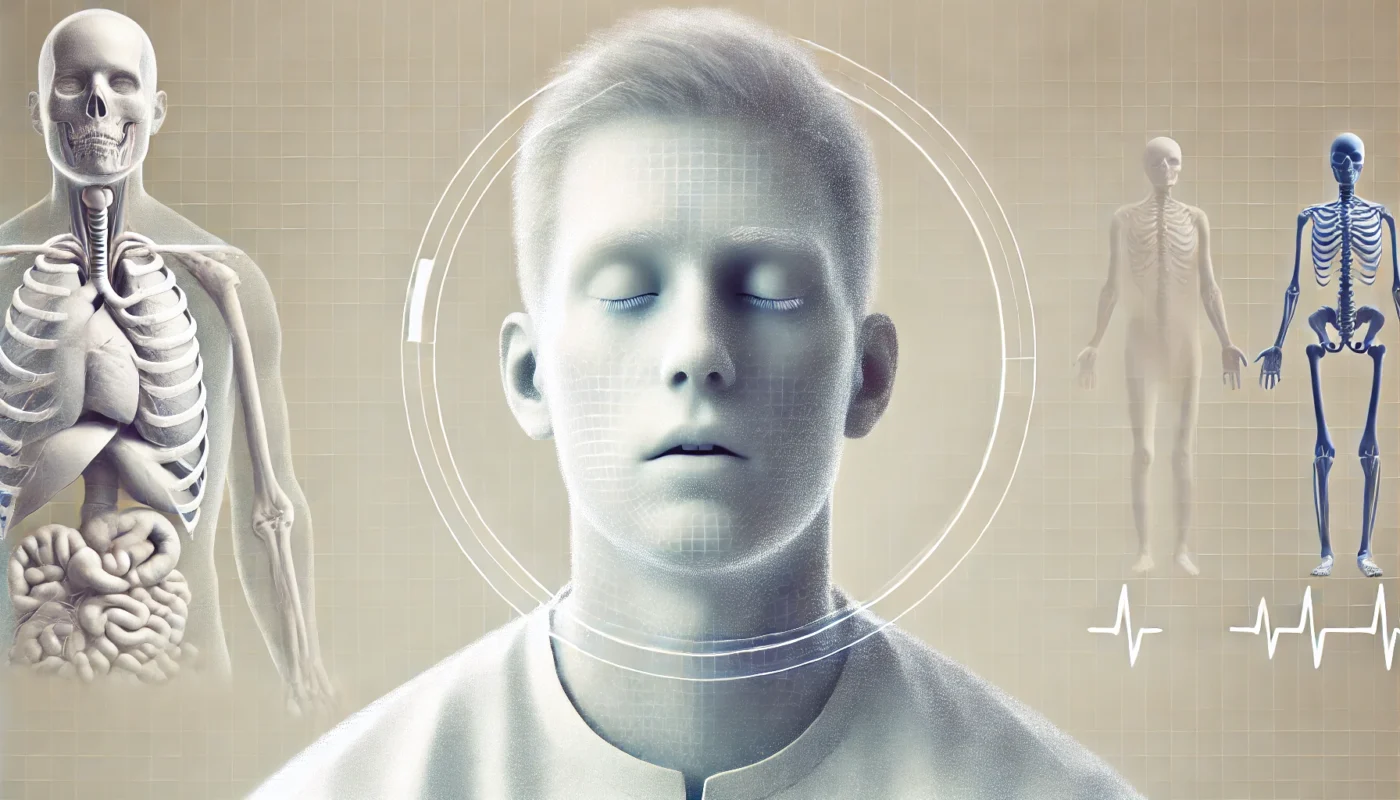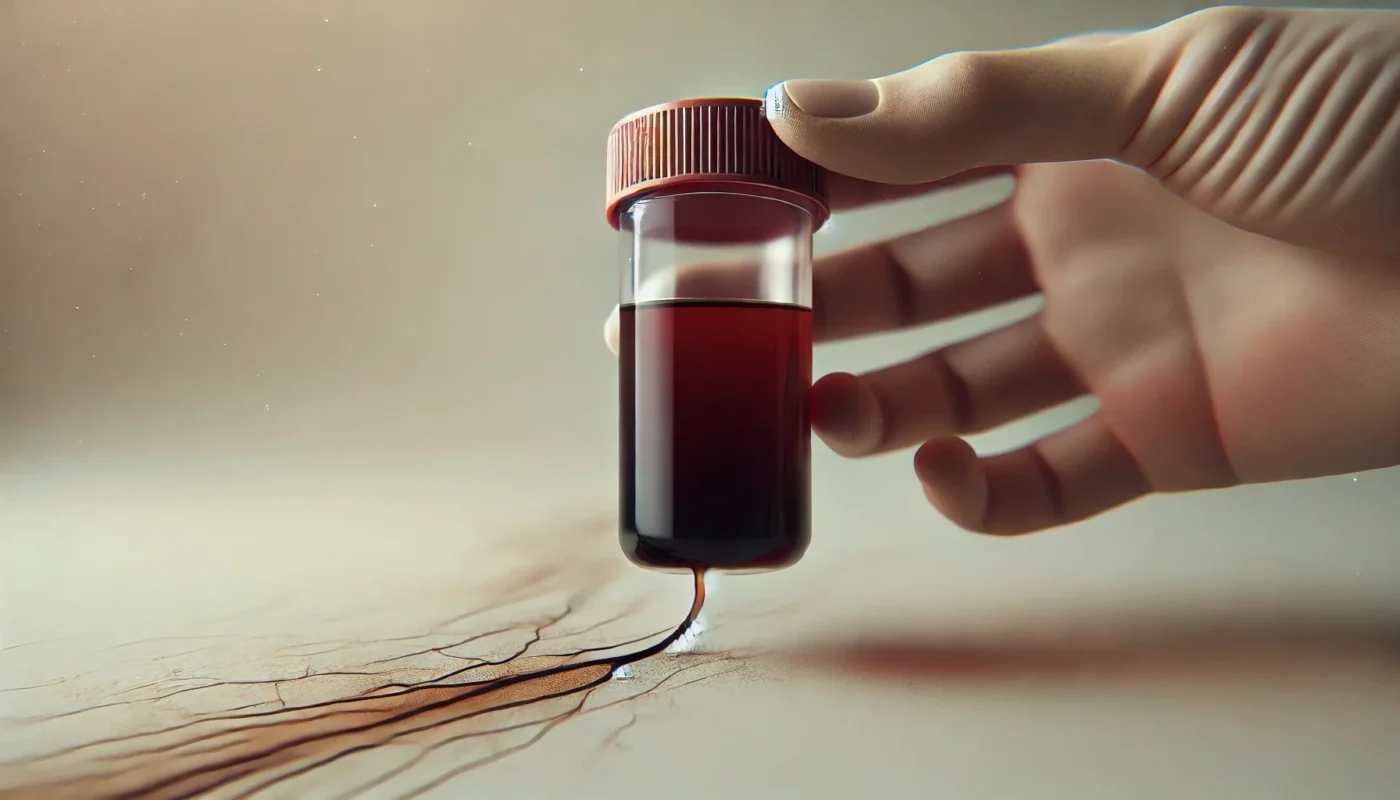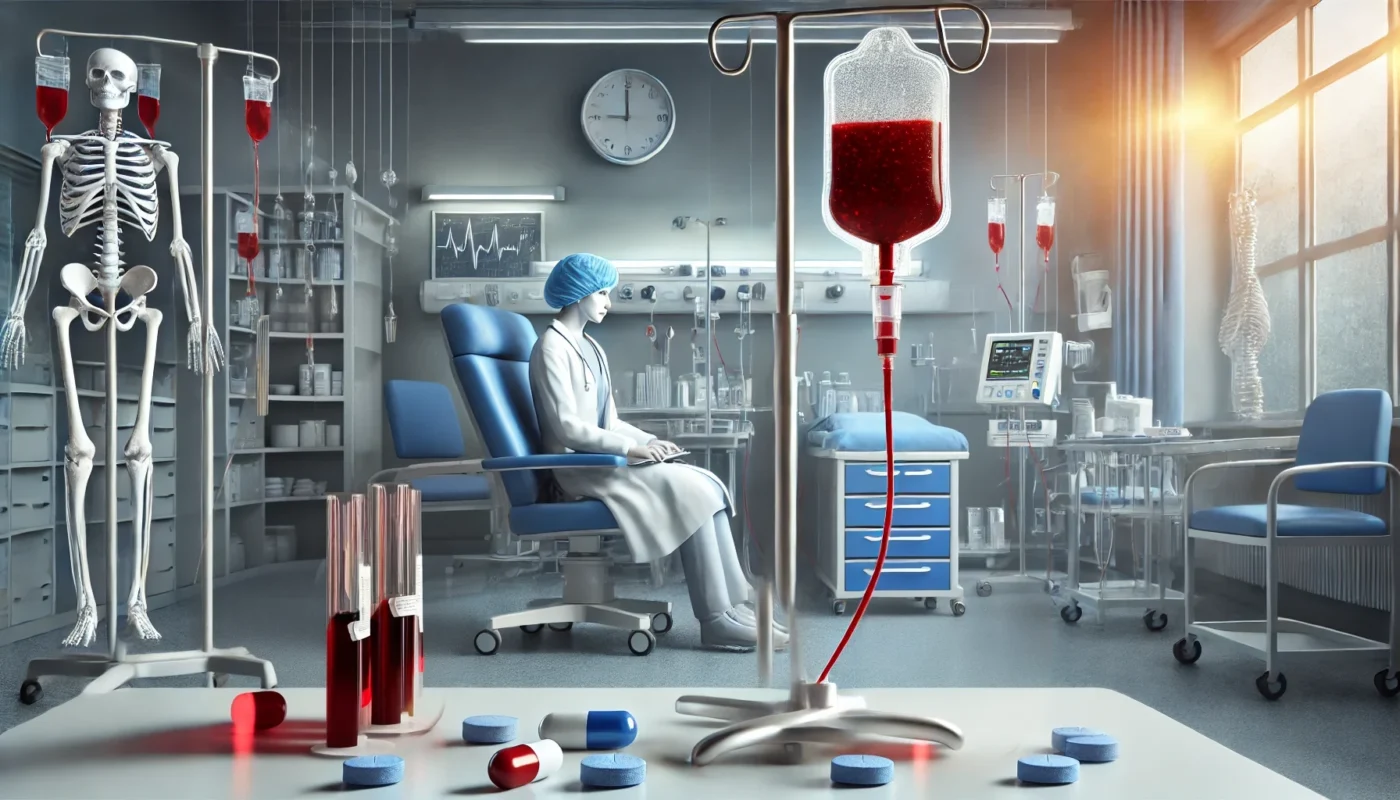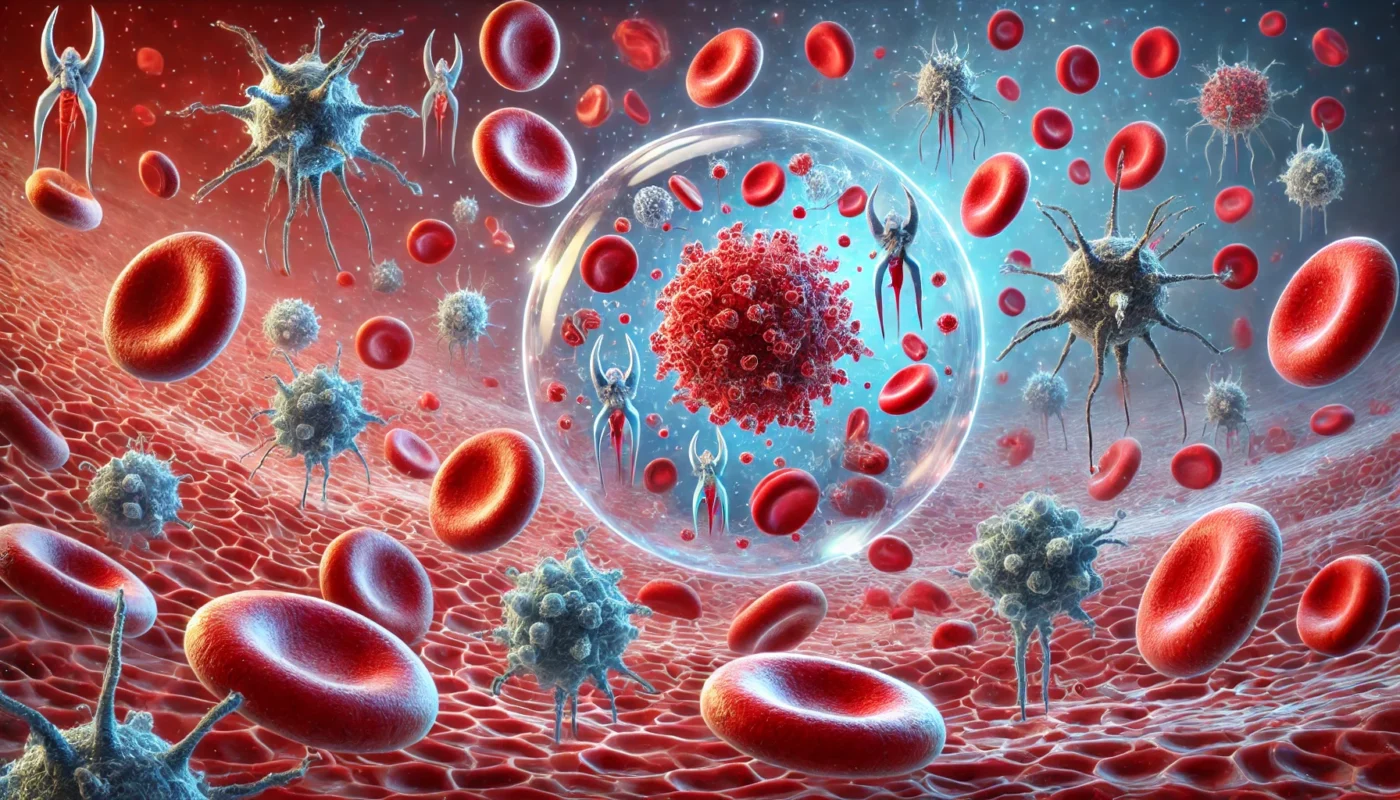Warm Autoimmune Hemolytic Anemia is a type of autoimmune disorder where the body’s immune system mistakenly attacks its own red blood cells. This leads to hemolysis, or the destruction of red blood cells, which can result in a variety of symptoms ranging from mild to severe.
Mechanism of Hemolysis
In Warm AIHA, the immune system produces antibodies that target and destroy red blood cells. This process primarily occurs in the spleen and liver, where the body’s filtration systems work to remove damaged cells. The presence of these antibodies is a hallmark of the disorder and is central to its diagnosis and treatment.
Prevalence and Demographics
Warm AIHA is relatively rare, affecting approximately 1 in every 100,000 individuals annually. It can occur in people of any age but is more common in adults, particularly women. Understanding its prevalence helps in recognizing potential risk factors and improving early detection.
Differentiation from Other Anemias
Unlike other forms of anemia, Warm AIHA is specifically characterized by the immune system’s direct attack on red blood cells, rather than a deficiency in production or a result of bleeding. This distinction is crucial for accurate diagnosis and effective treatment planning.
You May Also Like: Understanding Autoimmune Fatigue: Causes and Solutions
Warm vs. Cold Autoimmune Hemolytic Anemia
To understand Warm AIHA, it is essential to differentiate it from Cold AIHA. The primary distinction lies in the temperature at which the antibodies react. Warm AIHA involves warm antibodies, which react at body temperature, whereas cold AIHA involves cold antibodies, reacting at lower temperatures. This difference significantly impacts symptoms and treatment approaches.
Temperature Sensitivity
Warm AIHA antibodies function optimally at normal body temperatures, around 37°C (98.6°F). This activity contrasts with Cold AIHA, where antibodies become active at temperatures below 37°C, often triggered by cold environments. This temperature sensitivity influences both the clinical presentation and management strategies for each type.
Symptom Variability
Patients with Warm AIHA may experience symptoms continuously due to constant antibody activity at body temperature. In contrast, those with Cold AIHA often report episodic symptoms triggered by exposure to cold, such as Raynaud’s phenomenon. Understanding these nuances can assist healthcare providers in tailoring patient care.
Treatment Considerations
The treatment approaches for Warm and Cold AIHA differ due to the underlying mechanisms and triggers. While corticosteroids are commonly used for both types, Cold AIHA may require additional interventions to minimize exposure to cold and manage symptoms effectively. Personalized treatment plans are essential for optimal outcomes.

Symptoms of Warm Autoimmune Hemolytic Anemia
The symptoms of Warm AIHA can vary widely among individuals, making it a challenging condition to diagnose. However, some common symptoms include:
Fatigue and Weakness
One of the most prevalent symptoms is fatigue. Due to the decreased red blood cell count, the body struggles to deliver adequate oxygen to tissues, leading to persistent tiredness and generalized weakness.
- Impact on Daily Activities: Chronic fatigue can significantly impair daily functioning, making simple tasks like climbing stairs or carrying groceries exhausting. Patients often need to adjust their lifestyle to conserve energy.
- Psychological Effects: Persistent fatigue can lead to feelings of frustration and depression. Addressing these psychological components is crucial for comprehensive care.
- Fatigue Management Strategies: Incorporating scheduled rest periods and gentle exercises such as walking or stretching can help manage fatigue. Nutritional support and hydration are also vital components of a fatigue management plan.
Pale or Yellow Skin
The rapid breakdown of red blood cells can result in jaundice, characterized by yellowing of the skin and eyes. Additionally, individuals may notice paleness due to anemia.
- Jaundice and Its Implications: Jaundice indicates excess bilirubin in the blood due to increased hemolysis. Monitoring jaundice helps assess the severity of hemolysis and the effectiveness of treatment.
- Skin Pallor as a Diagnostic Clue: Pale skin is often one of the first visible signs of anemia, prompting further investigation. Clinicians use this symptom as a key indicator during the diagnostic process.
- Addressing Skin Changes: While skin changes are primarily a symptom to monitor, maintaining skin health through proper hydration and nutrition can support overall well-being.
Shortness of Breath
With fewer red blood cells to carry oxygen, individuals with Warm AIHA may experience shortness of breath, even during mild physical activity.
- Understanding Breathlessness: This symptom results from the body’s attempt to compensate for reduced oxygen delivery. Patients often report breathlessness during physical exertion or even at rest in severe cases.
- Monitoring Respiratory Function: Regular assessment of respiratory function can guide treatment adjustments and ensure adequate oxygenation.
- Strategies to Alleviate Symptoms: Breathing exercises and pacing activities can help manage shortness of breath. Patients should communicate any worsening of symptoms to their healthcare provider promptly.
Dark Urine
The breakdown of hemoglobin from destroyed red blood cells can lead to dark or tea-colored urine, a telltale sign of hemolysis.
- Significance of Dark Urine: This symptom indicates the presence of hemoglobin in the urine, which can be a marker of ongoing hemolysis. Monitoring urine color is an essential aspect of symptom tracking.
- Hydration and Urine Output: Encouraging adequate hydration can help dilute urine and support kidney function, potentially reducing the visibility of dark urine.
- Communicating Changes to Healthcare Providers: Any changes in urine color or output should be reported to healthcare providers for further evaluation and management.
Rapid Heartbeat
To compensate for the reduced oxygen-carrying capacity, the heart may pump faster, causing a rapid heartbeat or palpitations.
- Understanding Cardiac Compensation: The heart increases its rate to enhance blood flow and oxygen delivery to tissues, which is a physiological response to anemia.
- Monitoring Heart Rate: Regular monitoring of heart rate can help assess the body’s compensatory mechanisms and guide treatment decisions.
- Managing Palpitations: Relaxation techniques, such as deep breathing exercises, can help manage palpitations. Patients should discuss persistent or concerning symptoms with their healthcare provider.
Diagnosing Warm Autoimmune Hemolytic Anemia
Diagnosing Warm AIHA requires a combination of clinical evaluation and laboratory tests. Here are some of the key diagnostic tools:
Blood Tests
Blood tests play a crucial role in diagnosing Warm AIHA. The Direct Antiglobulin Test (DAT) or Coombs test is often used to detect antibodies attached to red blood cells. Additionally, a complete blood count (CBC) and reticulocyte count can provide valuable information about red blood cell levels and production.
- Direct Antiglobulin Test (DAT): The DAT is the gold standard test for detecting antibodies or complement proteins attached to red blood cells. A positive result supports the diagnosis of AIHA.
- Complete Blood Count (CBC): A CBC provides an overview of blood cell levels. In AIHA, it typically shows anemia with increased reticulocytes as the bone marrow compensates for hemolysis.
- Reticulocyte Count: Reticulocyte count reflects bone marrow activity. An elevated count indicates increased production of red blood cells in response to hemolysis.
Blood Smear
An AIHA blood smear may reveal the presence of spherocytes, which are abnormally shaped red blood cells indicative of hemolytic anemia.
- Identifying Spherocytes: Spherocytes are small, round red blood cells that lack the typical biconcave shape. Their presence is a key indicator of hemolytic anemia.
- Additional Findings on Blood Smear: Other findings may include polychromasia (variation in red blood cell color) and anisocytosis (variation in red blood cell size).
- Importance of Blood Smear: A blood smear provides visual confirmation of hemolysis and supports other laboratory findings in the diagnostic process.
Additional Diagnostic Tools
- Bone Marrow Examination: In some cases, a bone marrow biopsy may be performed to assess the production of blood cells and rule out other causes of anemia.
- Liver Function Tests: These tests can help evaluate the impact of hemolysis on liver function and monitor bilirubin levels.
- Imaging Studies: Imaging, such as ultrasound or CT scan, may be used to assess the spleen and liver for enlargement or other abnormalities.

Managing Warm Autoimmune Hemolytic Anemia
While medical treatment is essential for managing Warm AIHA, holistic and alternative approaches can complement conventional therapies. Here are some strategies to consider:
Nutritional Support
A balanced diet rich in iron, vitamin B12, and folate can support red blood cell production. Foods like leafy greens, lean meats, and fortified cereals are excellent choices.
- Iron-Rich Foods: Iron is crucial for hemoglobin production. Incorporating foods like red meat, beans, and spinach can help maintain adequate iron levels.
- Vitamin B12 and Folate: These vitamins are essential for red blood cell production and DNA synthesis. Sources include eggs, dairy products, and fortified cereals.
- Hydration and Its Role: Staying hydrated supports overall health and helps maintain optimal blood viscosity, aiding circulation.
Stress Management
Chronic stress can exacerbate autoimmune conditions. Incorporating stress-reduction techniques such as yoga, meditation, and mindfulness into your routine can have a positive impact.
- Yoga and Meditation: These practices promote relaxation and reduce stress hormones, potentially benefiting immune function.
- Mindfulness Techniques: Practicing mindfulness can help individuals manage anxiety and improve emotional well-being.
- Creating a Stress-Free Environment: Reducing stressors at home and work can contribute to better health outcomes for individuals with AIHA.
Regular Exercise
Engaging in moderate exercise can improve cardiovascular health and boost energy levels. However, it’s essential to listen to your body and avoid overexertion.
- Types of Exercise: Activities such as walking, swimming, and cycling are low-impact options that can enhance fitness without undue strain.
- Monitoring Exercise Intensity: Keeping exercise at a moderate intensity helps prevent fatigue and supports cardiovascular health.
- Benefits of Consistent Activity: Regular exercise can improve mood, increase stamina, and support overall well-being.
Herbal Remedies
Certain herbal remedies, such as turmeric and ginger, have anti-inflammatory properties that may help alleviate symptoms. Always consult with a healthcare professional before starting any herbal supplements.
- Turmeric: Contains curcumin, a compound with anti-inflammatory effects, which may benefit individuals with autoimmune conditions.
- Ginger: Known for its anti-inflammatory and antioxidant properties, ginger can be incorporated into the diet to support health.
- Consultation with Healthcare Providers: Before starting any herbal remedies, it’s crucial to consult with a healthcare provider to avoid interactions with conventional treatments.
Lifestyle Modifications
- Adequate Rest and Sleep: Ensuring sufficient rest and quality sleep is vital for immune health and energy restoration.
- Avoiding Triggers: Identifying and avoiding known triggers of hemolysis, such as certain medications or infections, can help manage symptoms.
- Regular Medical Check-Ups: Routine follow-ups with healthcare providers ensure ongoing monitoring and adjustment of treatment plans as needed.
Conventional Treatments for Warm Autoimmune Hemolytic Anemia
While holistic approaches can be beneficial, they are not a substitute for medical treatment. Here are some conventional treatments for Warm AIHA:
Corticosteroids
Corticosteroids are often the first line of treatment and work by suppressing the immune system’s attack on red blood cells. Prednisone is a commonly prescribed corticosteroid for Warm AIHA.
- Mechanism of Action: Corticosteroids reduce inflammation and suppress immune activity, helping to halt the destruction of red blood cells.
- Dosing and Administration: Treatment typically starts with a high dose, gradually tapering as symptoms improve. Monitoring for side effects is essential.
- Potential Side Effects: Long-term use can lead to side effects such as weight gain, osteoporosis, and increased risk of infections. Regular monitoring helps mitigate these risks.
Immunosuppressive Medications
In cases where corticosteroids are ineffective, immunosuppressive medications may be used to reduce the immune response.
- Common Immunosuppressants: Medications such as azathioprine and cyclophosphamide may be prescribed to help control the immune system.
- Balancing Benefits and Risks: While these drugs can be effective, they also increase the risk of infections and require careful monitoring.
- Regular Monitoring and Adjustments: Regular blood tests and clinical evaluations ensure appropriate dosing and minimize adverse effects.
Blood Transfusions
In severe cases, blood transfusions may be necessary to replenish the depleted red blood cells and stabilize the patient.
- Indications for Transfusion: Transfusions are considered when anemia is severe and symptomatic, providing immediate relief by increasing red blood cell count.
- Frequency and Monitoring: The frequency of transfusions depends on the patient’s needs, and careful monitoring is essential to prevent complications.
- Potential Risks: Transfusions carry risks such as allergic reactions and iron overload, necessitating close supervision by healthcare providers.
Splenectomy
For some individuals, surgical removal of the spleen (splenectomy) may be recommended to reduce the destruction of red blood cells.
- Rationale for Splenectomy: The spleen plays a significant role in filtering and destroying abnormal red blood cells. Removing it can decrease hemolysis.
- Considerations and Timing: Splenectomy is typically considered when other treatments are ineffective or contraindicated. Timing and patient selection are critical for success.
- Post-Surgery Monitoring: After splenectomy, patients require vaccination and monitoring for infections, as the spleen plays a role in immune defense.

Conclusion
Understanding Warm Autoimmune Hemolytic Anemia is the first step towards effective management. By recognizing the symptoms and seeking appropriate medical and holistic treatments, individuals can improve their quality of life. Remember to consult with healthcare professionals for accurate diagnosis and personalized treatment plans. With a comprehensive approach that combines both medical and holistic strategies, managing Warm AIHA becomes a more achievable goal.
- Empowering Patients: Knowledge and understanding empower patients to make informed decisions about their health and treatment options.
- Collaborative Care: Working closely with healthcare providers ensures a comprehensive and coordinated approach to managing Warm AIHA.
- Commitment to Well-being: A commitment to both medical and holistic strategies enhances the potential for improved health outcomes and quality of life.
Further Reading:
Warm autoimmune hemolytic anemia: new insights and hypotheses
Rituximab Use in Warm and Cold Autoimmune Hemolytic Anemia
Chronic Stress, Autoimmune Conditions, Stress Reduction, Yoga, Meditation, Mindfulness, Regular Exercise, Herbal Remedies, Turmeric, Ginger, Lifestyle Modifications, Corticosteroids, Immunosuppressive Medications, Blood Transfusions, Splenectomy, Warm Autoimmune Hemolytic Anemia, Health Management, Holistic Treatments, Patient Empowerment, Collaborative Care
Important Note: The information contained in this article is for general informational purposes only, and should not be construed as health or medical advice, nor is it intended to diagnose, prevent, treat, or cure any disease or health condition. Before embarking on any diet, fitness regimen, or program of nutritional supplementation, it is advisable to consult your healthcare professional in order to determine its safety and probable efficacy in terms of your individual state of health.
Regarding Nutritional Supplements Or Other Non-Prescription Health Products: If any nutritional supplements or other non-prescription health products are mentioned in the foregoing article, any claims or statements made about them have not been evaluated by the U.S. Food and Drug Administration, and such nutritional supplements or other health products are not intended to diagnose, treat, cure, or prevent any disease.

